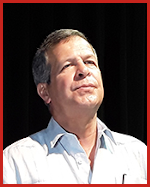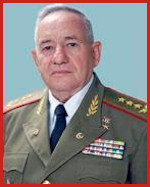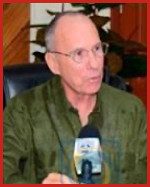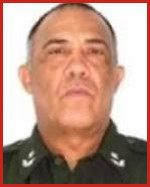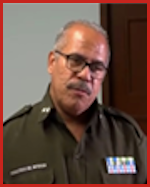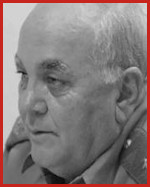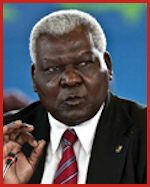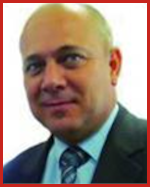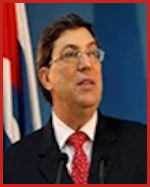EL CÍRCULO MILITAR DEL PODER
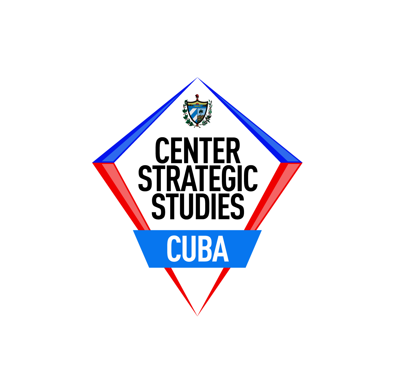
EL CÍRCULO MILITAR DEL PODER (2023) por Pedro V. Roig, Historiador, y Janisset Rivero, M. A.
CUBA: LA FALLIDA REVOLUCIÓN COMUNISTA
En enero de 1959, Cuba inició el camino de una revolución catastrófica. Ese año, Fidel Castro al frente del Ejército Rebelde, tomó el control del gobierno y Cuba se convirtió en una nación en guerra. El enemigo estaba conformado por la burguesía, la propiedad privada, la libertad individual y la emblemática democracia capitalista de los Estados Unidos.

Todo fue muy rápido. El 8 de enero de 1959, Fidel Castro hizo su entrada triunfal en la Habana y el 12 de enero aseguró por radio y televisión a los cubanos y al mundo que la revolución: “no era comunista”. Al día siguiente firmó la pena de muerte por delitos contrarevolucionarios. El 14 de enero se creó el Departamento de Investigación del Ejército Rebelde. (DIER) dirigido por los comandantes Abelardo Colome’(Furry) y Rene’ de los Santos. Este órgano de represión pasó a ser la génesis del Ministerio del Interior. (MININT). Habían transcurrido dos semanas desde que Fidel Castro asumió el poder total.
En octubre de 1959, Raúl Castro fue nombrado Ministro de las Fuerzas Armadas Revolucionarias (MINFAR). Desde su creación, el nuevo ejército quedó integrado en un rígido orden jerárquico basado en dos requisitos fundamentales: lealtad y obediencia a Fidel Castro que exigia absoluta devoción al sacrificio en defensa de la Revolución. La alucinante incoherencia marxista fue transformada en dogma de fe.

Sede del MININT
MININT: UNA BRUTAL FUERZA REPRESIVA
El 6 de junio de 1961 se creó el Ministerio del Interior (MININT), encabezado por el Comandante Ramiro Valdez, que fue desde el primer día una fuerza de represión eficiente y de brutal ferocidad. El Ministro del Interior se convirtió en un poderoso miembro del Círculo del Poder de Castro. Los oficiales (incluyendo a Ramiro Valdez) fueron entrenados por la KGB soviética y la Stassi de la Alemania del Este. Siguiendo el modelo soviético, se estableció la Dirección de Inteligencia, conocida como el G2. El comandante Manuel (Barbarroja) Piñeiro, fue el primer jefe del DI.
A fin de imponer vigilancia total, el MININT controla el Comité de Defensa de la Revolución (CDR), una fuerza paramilitar activamente presente en cada manzana de cada ciudad de la isla. Ni siquiera los soviéticos fueron capaces de alcanzar este grado de vigilancia y miedo en las calles.
Desde 1961 hasta el presente (2023), el MININT ha sido el órgano represor de una feroz dictadura militar aferrada al control del Estado. Para el académico Mark Falcoff: “El poder de Castro descansa principalmente en la lealtad y el compromiso de una clase militar”(1). En palabras de Raúl Castro, el ejército es: “La vanguardia del Estado”(2). Irving Louis Horowitz, profesor emérito de la Universidad Rutgers, escribió sobre el tema del gobierno militar: “La militarización de Cuba es consecuencia de la historia interna de la revolución cubana; el personal que conformó el régimen en sus inicios y que continúa gobernando ha sido militar”(3). La vigilancia, la desinformación y el terror son la esencia del MININT en función de proteger la dictadura.
GAESA: UN CONSORCIO FINANCIERO QUE DOMINA LA ECONOMÍA
La tercera organización de mando y control es el Grupo de Administración Empresarial (GAESA). Es un consorcio que domina más del 80% de la economía cubana y que está totalmente controlado por oficiales de las Fuerzas Armadas. Administra el turismo, las inversiones financieras, las importaciones y exportaciones y los sectores de remesas de la economía cubana.
GAESA no divulga información financiera. Eso es un secreto de Estado. Solo Raúl Castro y los miembros del Círculo del Poder tienen acceso a los datos financieros de GAESA. La supraempresa emplea a más de 30 mil personas (en su mayoría militares jubilados) y gestiona todas las operaciones generadoras de divisas (dolares o euros) en Cuba, incluidas las gigantescas empresas financieras GAVIOTA y CIMEX.
GAVIOTA controla la rentable industria turística, incluidas las cadenas hoteleras con más de 75.000 habitaciones en toda la isla, en sociedad con varias corporaciones hoteleras internacionales como Meliá de España, Starwood de Sheraton, Kempinski con sede en Suiza, y todas las marinas y alquileres de carros para turistas. CIMEX administra más de 2800 puntos de venta minoristas, incluidas las 1100 tiendas Panamericana, gasolineras, cafeterías de comida rápida y cientos de empresas comerciales en Cuba y en todo el mundo.
FALLECIMIENTO DE LUIS ALBERTO RODRÍGUEZ LÓPEZ-CALLEJA, PRESIDENTE DE GAESA
El general de división Luis Alberto Rodríguez López-Callejas, presidente de GAESA, falleció repentinamente el primero de julio de 2022 a los 62 años. Este fue un golpe devastador para la máxima jefatura del gobierno nacional en el proceso de transición del poder político a la joven generación.
En la década de 1990, Rodríguez López-Calleja se casó con Déborah Castro Espín, la hija mayor de Raúl Castro. Tuvieron dos hijos: Vilma Rodríguez Castro y Raúl Guillermo Rodríguez Castro quien está encargado de la protección personal de su abuelo Raúl Castro. Raul Guillermo es Teniente Coronel de las Fuerzas Armadas.
Para Raúl Castro, la transición de poder es un tema de máxima prioridad. Trabajó diligentemente con el general Julio Casas Regueiro, quien fue mentor de su yerno Luis Alberto en materia de eficiencia administrativa, inversiones extranjeras y créditos bancarios.La muerte de Rodríguez López-Calleja, heredero del gobierno cubano, creó un vacío de poder en la sucesión. Por primera vez en 63 años, el régimen comunista no tiene un líder carismático (Fidel) ni un liderazgo consensuado (Raúl). La muerte del sucesor ungido podría ser el inicio de una división en el proceso de transición del poder.
EL PARTIDO COMUNISTA
El 16 de agosto de 1925, se fundó en una casa de la calle Calzada del Vedado el Partido Comunista de Cuba. En esa reunión participaron dieciocho personas, incluyendo cuatro comunistas de origen judío: Félix Gurvich, Yoska Grinberg, Karol Wasserman y Abraham Simchovitch, este último conocido en Cuba por su nombre de guerra Fabio Grobart, dogmático y duro marxista polaco, que fue por sus vínculos con el Kremlin a nivel del Comité Central de la URSS, la figura de mayor importancia en la historia del primer Partido Comunista de Cuba, que siempre estuvo al servicio de los intereses de la Unión Soviética.
Desde el primer día de su entrada triunfal en la Habana, Fidel Castro incorporó a los veteranos miembros del reducido grupo de acción de Fabio Grobart en los organismos de inteligencia y represión. Los militantes del brazo político del Partido Comunista fueron situados entre los dirigentes de la enorme burocracia nacional. Más del 80% de la población en edad de trabajar está empleada por el Estado. Otros fueron designados como jefes de barrios en los Comités de Defensa de la Revolución (CDR) bajo la atenta mirada del MININT. Durante más de 60 años de nepotismo, el Partido se ha convertido en una burocracia altamente corrupta que dirige sus trabajos como negocios de familias.
NO HAY LÍMITES CONSTITUCIONALES AL PODER MILITAR
La autoridad del MINFAR y del MININT no está limitada por ninguna ley constitutional. Las fuerzas armadas son la garantía de mantener vigente el legado Marxista de Fidel Castro. (Que ha hecho de Cuba uno de los países mas pobres del mundo y feroz violador de las libertades individuales del Cubano) Durante la lucha guerrillera en Cuba y la campaña militar africana (en esencia dos generaciones), forjaron un poderoso vínculo de lealtades integradas en una clase militar privilegiada que protege su estatus de élite política, financiera y social. Sus familias disfrutan de una calidad de vida “aristocrática socialista”.
El MINFAR está compuesto por los Ejércitos Occidental, Central y Oriental, las “Tropas Especiales”, la Fuerza Aérea y la Marina de Guerra. Comandan las regiones estratégicas vitales de Cuba. El MININT controla, entre otros, el Servicio de Inteligencia y el represivo Servicio de Contrainteligencia, así como la Policía Nacional Revolucionaria.
En el verano de 2023, el ministro del MINFAR, el general de cuerpo de ejército Álvaro López Miera, y el ministro del MININT, el general de división Lázaro Álvarez Casas, se convirtieron en las principales autoridades de Cuba (con la colaboración del general de ejército semi retirado Raúl Castro). Los otros miembros de la oligarquía militar son los generales de cuerpos de ejército Ramón Espinosa, Joaquín Quintas Solá y el general de división Roberto Legrá Sotolongo, todos viceministros del MINFAR. También componen esta oligarquía los generales de división Leonardo Andollo y Luis Pérez Róspide, el general de brigada José Amado Guerra, y los coroneles Alejandro Castro y Homero Acosta.
El presidente Miguel Díaz Canel es el jefe de Estado (Artículo 125) y sus funciones son esencialmente ceremoniales, pero, de hecho, el primer ministro Manuel Marrero es el jefe del Gobierno de Cuba (Artículo 122). Tanto Díaz Canel como Marrero son miembros relevantes del régimen cuya tarea es crear una percepción de legítima continuidad institucional.
The Cuba Center for Strategic Studies (CCSS) Goals
The CCSS is a Cuban American research and think tank institution in the area of Cuba’s political-military issues based in Miami, Florida, U.S.A., which focuses on the understanding of historical successes and failures in order to apply strategic thought to the problems of the future. To achieve these goals, we are guided by a distinct set of values, independent ideas, cultural diversity, integrity and realistic analysis, embedded in a solid creed of freedom and the rule of law for Cuba.
The initial board of trustees, chaired by Pedro V. Roig, Esq. is composed of highly distinguished and accomplished individuals who provide overall direction and leadership to CCSS. They bring the professional, political and cultural perspective of three generations of Cubans and Cuban Americans at a time of great historical development on the island. Janisset Rivero, MA, Leon Hirzel, Esq, Richard Kuper, Esq. and José “Pepi” Díaz, Esq. who have dedicated their allegiance to solve complex issues of human rights and justice.
The Cuban Center for Strategic Studies arises from the urgent need to collect and update information on the political, social and economic situation in Cuba. This need has become crucial after the massive protests led by the Cuban people as of July 11, 2021. The protests took place in a disadvantageous political framework for the regime.
The military elite that rules Cuba has remained in power for 62 years thanks to various factors: coercion, brutal repression, the participation of the regime in drug trafficking and other illicit activities in the international arena, the use of propaganda and disinformation inside and outside the Island, and the concentration of economic power in the hands of an illegal military oligarchy that controls the destiny of the country in a totalitarian way.
However, this massive response from the people in their clamor for freedom took everyone by surprise. The security forces failed to foresee the dimension of the rebellion. The world was able to witness first-hand the struggle Cubans are waging in the face of the fierce repression of the military that controls power.
Who are they? How is their militaristic regime structured? Is the power they wield legitimate?
In this methodical research and thoughtful analysis, CCSS addresses these issues, offering the names and military ranks of those who hold power in Cuba and the corrupted economic and political structure which sustains them.
FIDEL & RAÚL CASTRO’S LEGACY OF A MILITARISTIC STATE
The MINFAR–MININT and GAESA are the dominant forces in Cuba. They have a supra-constitutional dominion of government. They are not limited by any laws, nor bound by any rules.
From the Sierra Maestra, Fidel Castro knew his political power rested on the loyalty and control of the Army and a repressive security force. Under his intolerant leadership, there was no room for freedom of speech and dissent. Immediately, Castro began the process of glorification of the revolutionary Armed Forces as the sacred authority of the State.
They have evolved into a tightly-knit upper class, protecting their privileges. In 1965, Castro established the Communist Party as an obedient bureaucracy controlled by the military.
They are integrated into a rigid military oligarchy1. For scholar Mark Falcoff, Castro’s power “rests principally upon the loyalty and commitment of an officer class”.2
Irving Louis Horowitz, Professor Emeritus at Rutgers University, wrote on the issue of the military rule: “The militarization of Cuba is a consequence of the inner history of the Cuban Revolution; the personnel which made up the regime at the outset and continues rule, has been military”.3
THE DIFFERENT ROLE OF THE COMMUNIST PARTY IN THE SOVIET UNION AND CUBA
The Soviet and Cuban historiography offers profound differences between the roles of the Communist Party in both historical processes. In 1917, Lenin led and established the Communist Party as the center of power. In Cuba, Fidel Castro’s control of the revolution rested in the Rebel Army. Álvaro Alba, journalist and expert in Russian culture and political history, clearly points out the different roles of the Communist Party in the Soviet and the Cuban revolutions. Alba stated: “unlike the cases of Eastern Europe or the Soviet Union, in Cuba military power created political power, sustained it, substituted for it or eliminated it, as needed”.4 In Castro‘s Cuba, the Communist Party was in charge of administering the State’s bureaucracy. As Alba notes: “The Communist Party was created by the governing elite in the mid-1960’s…becoming to a great extent, the political instrument of the military”.5
A HISTORICAL TURNING POINT
The people’s protests of July 11th, 2021 were a massive rebellion of the Cuban youth heartened thru the internet in a patriotic demand for “freedom and change” (libertad y cambio).
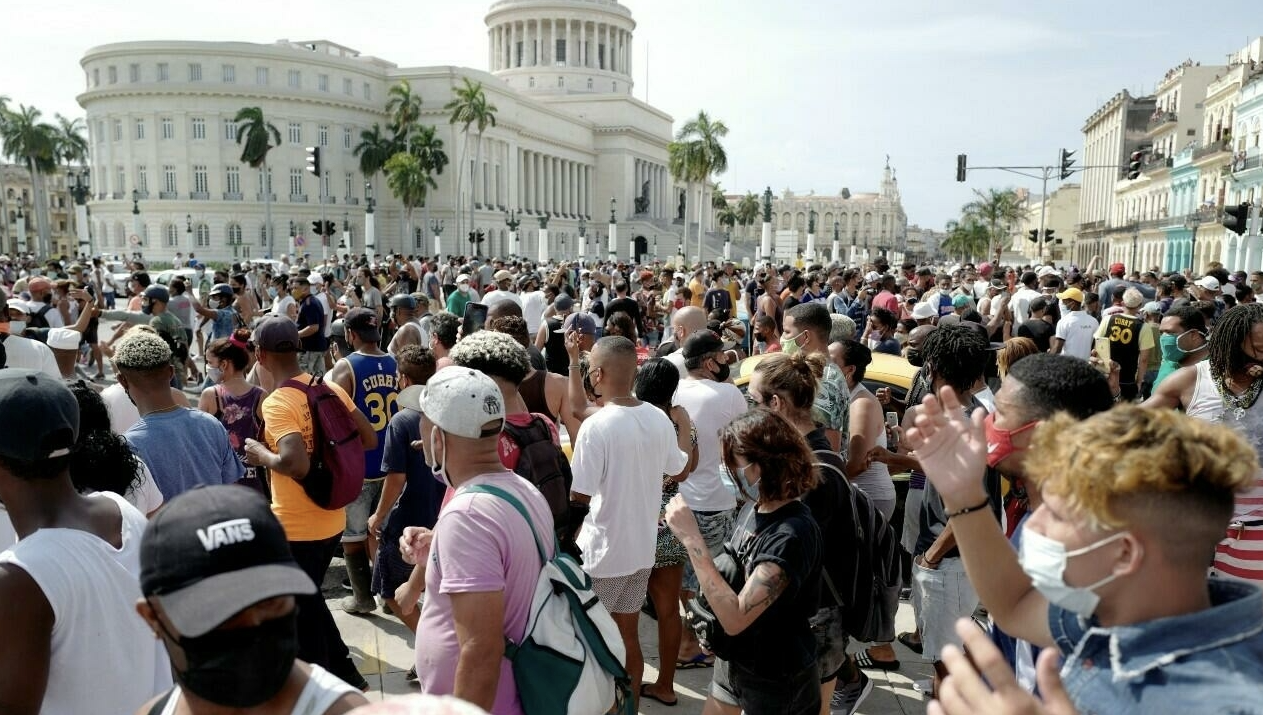
July 11th protests signal a heroic rebellion and commitment to freedom
STRATEGIC REGIONAL AUTHORITIES (SRA)
Aware of the fragility of political succession, Raúl Castro appointed three of his trusted generals in full control of the SRA. These powerful commands are specifically framed in Cuba’s communist Constitution (Art.101, Law No. 75) National Defense Council. It provides total control over the Armed Forces, the Communist Party and all government ministerial bureaucracy. The generals in charge of the three territorial armies, Eastern, Central and Western are subordinated to the SRA. In control of these Strategic Regional Authorities are: General Ramón Espinosa (Eastern Region); General Joaquín Quintas Solá (Central Region); and General Leopoldo Cintras Frías (Western Region- Retiring). These generals are highly trusted in the military power structure.
EL CÍRCULO DEL PODER. (MINIBIOGRAFÍAS)
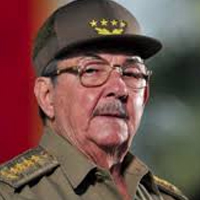
General Raúl Castro (92)
El poder tras bambalinas.
Raúl Castro es un comunista militante devoto del dictador soviético José Stalin, dogmático intolerante, obediente a las órdenes de su hermano, y comprometido con el control de las Fuerzas Armadas de un Estado totalitario marxista-leninista. Creó su círculo personal de oficiales favoritos, entre ellos el general Julio Casas que es tío del Ministro del Interior, el general Lázaro Álvarez Casas.
Se desempeñó como ministro de las Fuerzas Armadas durante 49 años (1959-2008) y fue primer secretario del Partido Comunista de Cuba de 2011 a 2021. En abril de 2021, Raúl Castro se retiró de sus funciones gubernamentales en el gobierno cubano. En la actualidad, se encuentra semi retirado y proporciona aportes decisivos en asuntos relevantes. Raúl Castro sigue ocupando un escaño en la Asamblea Nacional representando a Santiago de Cuba.
En sus años de formación, Raúl Castro viajó a Viena (cuatro meses antes del fiasco del Moncada en 1953) para asistir a la Conferencia Mundial de la Juventud patrocinada por Moscú. Posteriormente fue a Budapest, Praga y Bucarest. Le gustó lo que vio. Durante este viaje entabló una duradera amistad con Nikolai Leonov, un oficial del servicio de espionaje de la KGB quien más tarde resultó ser un enlace útil con el Kremlin. Raúl recordó que desde ese momento “estuvo dispuesto a morir por la causa comunista”. Documentos desclasificados de la KGB ofrecen pruebas de que Fidel Castro convirtió deliberadamente a Raúl en un marxista.
A los 22 años, de regreso en Cuba, Raúl ingresó en la rama juvenil del Partido Comunista de Cuba (PCC). Más tarde, durante su estancia en México, Raúl entabló una estrecha amistad ideológica con Ernesto “Che” Guevara y se comprometió a crear una sociedad marxista en Cuba. En 1963, Raúl fue el enlace oficial entre Fidel y Nikita Khrushchev para desplegar misiles nucleares en Cuba.
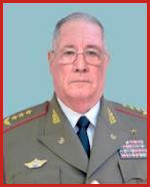
General del Cuerpo de Ejército
Álvaro López Miera (80)
Ministro del MINFAR
López Miera es un veterano de las campañas africanas. Estudió en la academia militar Frunze de la antigua Unión Soviética para oficiales de estado mayor. López Miera es muy cercano a Raúl Castro y a la familia de Vilma Espín. Durante su estancia en Angola, creó lazos de amistad con los generales Ramón Espinosa y Joaquín Quintas Solá. Es miembro del politburó y se le considera un líder militar capaz. Comunista de línea dura, López Miera está comprometido con la preservación del legado revolucionario de Fidel y Raul Castro.

se reúne en Moscú con el ministro ruso de Defensa, Sergei Shoigu,
reafirmando el apoyo de Cuba a la invasión rusa de Ucrania.
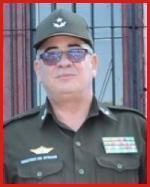
General de división
Lázaro Álvarez Casas (58)
Ministro del Interior (MININT)
Álvarez Casas ingresó en las Fuerzas Armadas poco después de cumplir 20 años y desempeñó diversas tareas militares, entre ellas la de jefe de Contrainteligencia. Prestó servicio en Angola y se graduó en la academia “Máximo Gómez”. Es sobrino del fallecido general Julio Casas, fundador de GAESA. El 15 de enero de 2021, el general Álvarez Casas fue sancionado por la Oficina de Control de Activos Extranjeros del Departamento del Tesoro de Estados Unidos en virtud de la Ley Magnitsky sobre Rendición de Cuentas Global sobre Derechos Humanos. Miembro del Buró Político, es uno de los oficiales más intolerantes de la oligarquía militar.
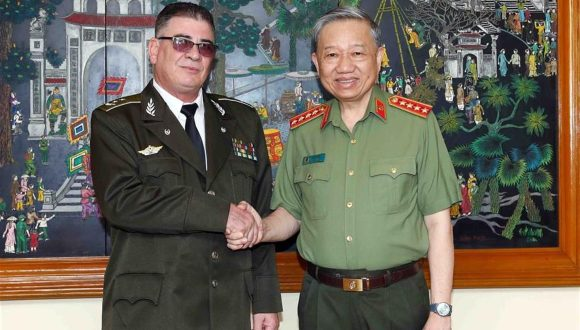
El general Lázaro Álvarez Casas se reunió en Hanói con el ministro de Seguridad de Vietnam, el general To Lam. (16 de mayo de 2023).

General del Cuerpo de Ejército Ramón Espinosa (83)
Viceministro del MINFAR
Jefe de la Región Estratégica Oriental
Ramón Espinosa se incorporó al Ejército Rebelde en las montañas del Escambray, en la región central de Cuba (Las Villas). Es veterano de la generación de las campañas africanas. Líder militar de primera línea, fue gravemente herido en Angola. En aquel encarnizado combate, Joaquín Quintas Solá formó parte del equipo que combatió y rescató a Espinosa.
Altamente recompensado por Raúl Castro como comandante militar confiable, Espinosa fue enviado más tarde a la academia soviética Voroshilov para oficiales de Estado Mayor. Es uno de los generales de mayor rango en la oligarquía militar, y contribuye a la selección del liderazgo de la generación más joven al poder. Es miembro del Buró Político.

General del Cuerpo de Ejército
Joaquín Quintas Solá (84)
Viceministro del MINFAR
Jefe de la Región Estratégica Central
Quintas Solá se unió a la guerrilla de Raúl Castro (1958) en Sierra Cristal. En mayo de 1976 reemplazó al general Ramón Espinosa como jefe del frente de Cabinda en Angola. De 1987 a 2008 fue jefe del Ejército Central de las Fuerzas Armadas Revolucionarias (FAR). Viaja con frecuencia a Caracas, Venezuela, donde mantiene una estrecha colaboración con generales venezolanos. Quintas Solá muestra un perfil público bajo y es miembro del Comité Central del Partido Comunista.
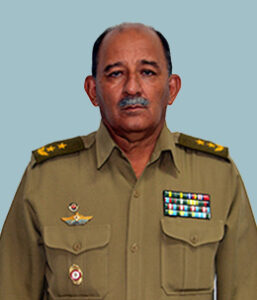
General de división Roberto Legrá Sotolongo (69)
Viceministro y jefe del Estado Mayor del MINFAR
El general Sotolongo representa el caso notable de un soldado humilde que ascendió mediante autodisciplina, determinación y fortaleza al rango de viceministro del MINFAR y jefe del Estado Mayor de las Fuerzas Armadas de Cuba. A finales de 1987 fue desplegado a Angola donde sirvió en varias brigadas armadas en combate. De regreso en Cuba, Legrá Sotolongo fue jefe de una división armada y más tarde fue nombrado director de la academia militar “Máximo Gómez” del MINFAR. El 19 de agosto de 2021, el general Legrá Sotolongo fue sancionado por el gobierno de Estados Unidos en virtud de la Ley Global Magnitsky sobre Derechos Humanos. Es un influyente miembro de la oligarquía militar.
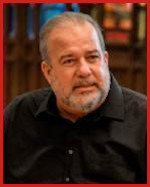
Manuel Marrero Cruz (60)
Primer ministro. Jefe de Gobierno de Cuba
Manuel Marrero es ingeniero arquitectónico y coronel retirado de contrainteligencia del MININT. Comenzó a trabajar en 1990 con los generales Rodríguez López-Calleja y Pérez Róspide en la recién creada empresa GAVIOTA. De 2004 a 2019, Marrero fue ministro de Turismo y llegó a ser el miembro con mayor antigüedad del Consejo de Ministros. De hecho, estuvo presente cuando Fidel Castro presidía las reuniones del Consejo. Marrero tiene más de 20 años de experiencia en turismo y administración de la burocracia del Estado. El 21 de diciembre de 2019, Marrero fue nombrado primer ministro y jefe de Gobierno de Cuba. Es miembro del Buró Político.
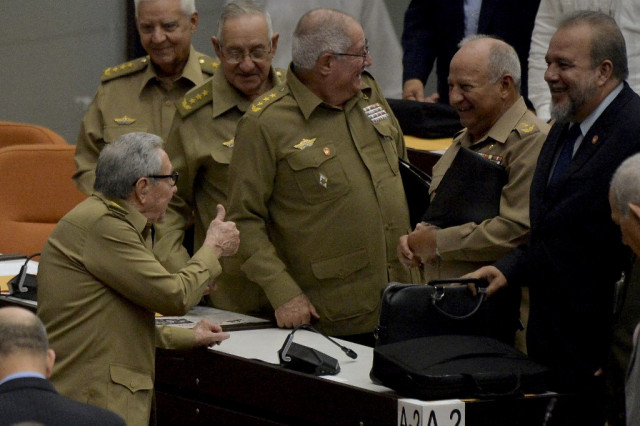
Raúl Castro y los generales de más alto rango celebran el nombramiento de Manuel Marrero como primer ministro
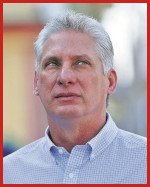
Miguel Díaz Canel (63)
Presidente del Estado y primer secretario del Partido Comunista.
Ingeniero civil, fue elegido a dedo por Raúl Castro para ocupar el cargo de la presidencia ceremonial. Díaz Canel es un experimentado miembro de supervivencia de la nomenclatura burocrática siempre en sintonía con la protección de los privilegios del poder militar exclusivista. En respuesta a las masivas manifestaciones de la oposición de julio de 2021, el liderazgo de Díaz Canel fue la antítesis del carisma y presentó síntomas de confusión ante las pacíficas y espontáneas marchas del pueblo cubano que expresaba su frustración, exigiendo libertades individuales y respeto a los Derechos Humanos.. El MININT descargó su brutal fuerza de represión y maquinaria propagandística (intensamente activa en Miami) para controlar la narrativa de las manifestaciones de protesta. Cuba es un parásito económico y Díaz Canel es la figura protocolar de un régimen en bancarrota controlado por la oligarquía militar que busca desesperadamente créditos financieros.. Es miembro del Buró Político.

General de división
Leonardo Andollo Valdés (77)
Segundo jefe del Estado Mayor del Ejército de Cuba.
El general Andollo es doctor en Ciencias Militares y experto en logística. Mantiene una activa participación en varias empresas financieras, incluida GAESA, y supervisa con los militares venezolanos el transbordo de drogas de los proveedores colombianos a los carteles distribuidores. Viaja con frecuencia a Caracas, donde durante años se ha convertido en el enlace operativo con los militares venezolanos.
Andollo es veterano de las campañas de África. Asistió a la academia militar Voroshilov (1974-1976) para capacitarse como ingeniero táctico. Es el jefe ejecutivo de la Comisión Permanente para la Implementación del Modelo Económico en Cuba y asesor de la Zona Especial de Desarrollo Mariel. Andollo es un destacado miembro del Círculo Interno del Poder de Cuba.

El general de división Leonardo Andollo Valdés (camiseta roja) con oficiales cubanos en el aeropuerto de Maiquetía (Venezuela)

General José Amado Guerra (71)
Secretario del Consejo de Ministros
En 1978 prestó servicio en África (Etiopía). De regreso en Cuba fue asignado como jefe del Estado Mayor del Ejército Oriental. Guerra trabajó varios años bajo el mando del general Julio Casas mientras creaba GAESA y más tarde fue transferido al círculo interno del general del Ejército Raúl Castro. En la actualidad, el general Amado Guerra figura entre los oficiales con mejores conexiones de las Fuerzas Armadas y de GAESA. Es miembro del Buró Político.

Coronel Homero Acosta (62)
Secretario del Consejo de Estado
Acosta fue nombrado en agosto de 2009 para este cargo. Tiene una maestría en Derecho Público. Comenzó su carrera en los Tribunales Militares de las Fuerzas Armadas Revolucionarias. El coronel Acosta llegó a su actual cargo como ejecutivo de confianza de Raúl Castro en la Secretaría del Ministerio de las Fuerzas Armadas Revolucionarias.
Según los informes, Acosta es organizado y eficiente. Participó en las negociaciones para restablecer las relaciones diplomáticas con Estados Unidos y trabajó en la versión final de la Constitución comunista de 2019. También es cercano a Alejandro Castro.
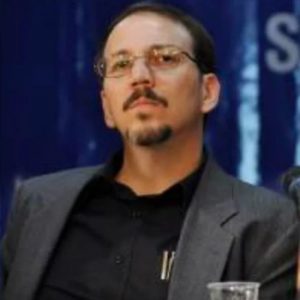
Coronel Alejandro Castro Espín (58)
Jefe del MINFAR – Coordinador de Inteligencia del MININT
Es hijo de Raúl Castro y Vilma Espín y hermano de Déborah, Mariela y Nilsa. Alejandro Castro es ingeniero con maestría en Relaciones Internacionales y doctorado en Ciencias Políticas. Escribió un libro muy crítico contra Estados Unidos titulado “El imperio del terror” y está totalmente comprometido con la ideología marxista-leninista. Alejandro prestó servicio en las campañas de África. No luchó en primera línea pero sufrió una herida accidental en un ojo. Es una figura prominente en la estructura de poder de Cuba y mantiene estrechas relaciones personales con Vladimir Putin y otros funcionarios del gobierno ruso.
Participó con su padre en la organización de las visitas del papa Francisco y del presidente Barack Obama a Cuba. Su nombre se mencionó como el principal responsable de los ataques sónicos contra diplomáticos estadounidenses y canadienses en La Habana. Mantiene un perfil político bajo en medio de la profunda crisis económica que enfrenta Cuba. Carente de carisma, se mantiene activo dentro del Círculo Interno del Poder como Coordinador de Inteligencia del MINFAR y el MININT, una función poderosa.

General de división Luis Pérez Róspide (79)
Presidente del Grupo de Turismo Gaviota
Como presidente de Gaviota, el general Pérez Róspide administra una red de hoteles turísticos (de cuatro y cinco estrellas) con más de 75.000 habitaciones, y una fuerza laboral de más de 25.000 empleados, en su mayoría veteranos de las Fuerzas Armadas. Pérez Róspide nació en Guantánamo. A los 15 años se unió a la guerrilla de Raúl Castro en Sierra Cristal y con los años se convirtió en miembro de confianza de su estrecho y confiable círculo de oficiales.
En 1964, Raúl Castro envió a Pérez Róspide a estudiar “Ingeniería Mecánica del Ejército” en la Unión Soviética. También combatió en las campañas africanas y, en 1988, Raúl Castro lo nombró director de la Unión de Empresas Militares (UEM) a cargo del mantenimiento de armamentos. La UEM era entonces el mayor complejo industrial militar de Cuba con cerca de 230 fábricas.
En 1992-1993, durante la desintegración de la Unión Soviética y la cancelación de la enorme subvención financiera que recibía Cuba, Raúl Castro nombró a Pérez Róspide como director del Grupo de Turismo Gaviota, la empresa más importante y rentable de las Fuerzas Armadas que genera una buena calidad de vida a los oficiales activos y retirados del MINFAR y el MININT.
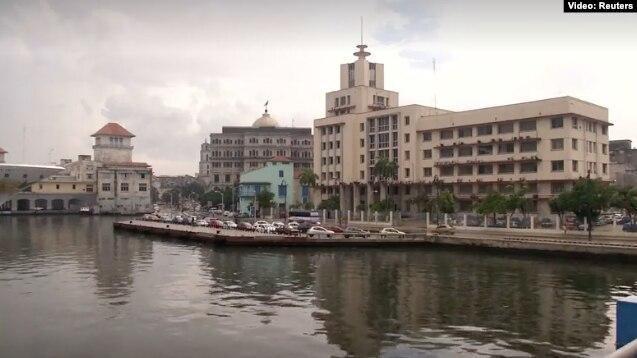
Sede del GAESA
GAESA: LIDERAZGO DE LA ECONOMÍA
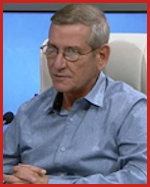
Coronel Héctor Oroza Basutín
Presidente de la Corporación de Exportaciones e Importaciones (CIMEX) de Cuba
Oroza Basutín dirige más de 70 negocios comerciales y 20 corporaciones y controla una enorme operación financiera que incluye más de 2800 puntos de venta y más de 70 empresas ubicadas en países extranjeros. Todas las transacciones comerciales de CIMEX se realizan en dólares estadounidenses o en euros. En 2012, CIMEX se convirtió en subsidiaria de GAESA. El coronel Basutín pertenece a la élite financiera de Cuba.
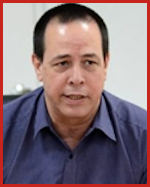
Dr. José Ángel Portal Miranda (57)
Ministro de Salud Pública
El doctor José Ángel Portal es especialista en Medicina General. Fue nombrado ministro de Salud Pública en diciembre de 2018. Es miembro del Partido Comunista de Cuba desde 1995. Fue condecorado con la medalla “Servicio Distinguido” de las FAR.
Coordina con GAESA las multimillonarias ganancias en dólares asignadas al programa de médicos y enfermeras cubanos en varios países del mundo, un programa que ha sido denunciado en foros internacionales como una forma moderna de esclavitud debido a que el gobierno cubano cobra el 80% de los salarios del personal médico.

Ricardo Cabrisas Ruiz (85)
Ministro de Comercio Internacional
Embajador en Japón (1971-1973); viceministro de Comercio Exterior (1973-1980); ministro de Comercio Exterior (1980-2016); ministro de Economía y Planificación (2016-2022), ministro de Comercio Exterior (2022-2023).
Ricardo Cabrisas es veterano en acuerdos y negociaciones de reestructuración de deuda. Mantiene estrechas relaciones diplomáticas con Rusia y la cúpula financiera de China. Cabrisas enfrenta la difícil situación económica de Cuba.
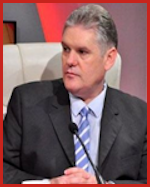
Alejandro Gil Fernández (59)
Ministro de Economía y vice primer ministro
Alejandro Gil Fernández nació en 1964. El 21 de julio de 2018 fue nombrado ministro de Economía y Planificación. El 21 de diciembre de 2019 fue designado viceprimer ministro.
Estudió Operaciones de Transporte en la Universidad Tecnológica y obtuvo una maestría en Finanzas en la Universidad de La Habana. Fue director del Grupo Caudal, entidad financiera dedicada a servicios de consultoría y asesoría. Se ocupa de la economía en colapso de Cuba.
Gil se enfrenta a una agenda sumamente difícil. Desde antes de la pandemia del COVID 19, Cuba lidiaba con una catástrofe de infraestructura en el ámbito nacional y la peor crisis económica desde la desintegración de la Unión Soviética.

Juan Carlos García Granda (59)
Ministro de Turismo
Un burócrata eficiente y de bajo perfil procedente de las filas de GAESA, García Granda fue nombrado ministro de Turismo en diciembre de 2019. Durante 2020 y 2021, García Granda participó en numerosos foros internacionales en un esfuerzo por promover el turismo de Cuba impactado por la pandemia del Covid-19 y las restricciones en los viajes. Trabaja en estrecha colaboración con el primer ministro Manuel Marrero. El impacto del Covid-19 fue catastrófico para la industria del turismo. El número de turistas que visitaron Cuba en el primer semestre de 2021 descendió de aproximadamente 986. 000 a 141. 000 (86%) en comparación con el mismo periodo del año anterior. En el año 2022 el turismo cayó un 65% y en el primer semestre del 2023 las cifras son las peores en los polos turísticos del Caribe.
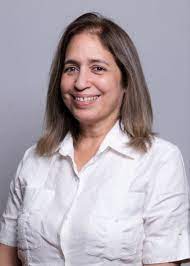
General de Brigada Ania Lastres Morera. (56)
Presidenta de GAESA
En 1984, Ania Lastres comenzó a trabajar bajo la tutoría del general Julio Casas Regueiro como especialista en gestión empresarial y economía. En 1995 se convirtió en asistente de Luis Alberto Rodríguez López-Calleja en GAESA. Tiene experiencia en inversiones inmobiliarias internacionales, tráfico marítimo y servicios financieros.
La General de Brigada Ania Lastres Morera fue nombrada presidenta de GAESA luego del fallecimiento de Luis Alberto Rodríguez López-Calleja. En 2019 pasó a ser diputada de la Asamblea Nacional del Poder Popular.
LIDERAZGO MILITAR
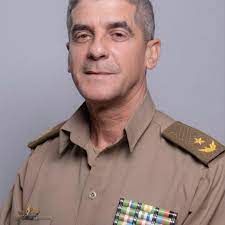
General de brigada Ernesto Feijóo Eiró
Jefe del Ejército Occidental (57)
Graduado de la academia de comando militar Máximo Gómez y de la “Escuela Interarmas Antonio Maceo”, el general de brigada Feijóo es también diputado de la Asamblea Nacional de Cuba. Ha recibido varias condecoraciones militares. La poderosa división blindada “Rescate de Sanguily” está desplegada en el Ejército Occidental al mando del general Feijóo.

General de división
Andrés González Brito (69)
Jefe del Ejército Central
El general González Brito tenía 6 años cuando el Ejército Rebelde entró en La Habana. En 1969 se incorporó a la academia “Camilo Cienfuegos” y se graduó en 1974 como oficial subalterno. González Brito ocupó varios puestos militares, entre ellos el de jefe del regimiento de tanques UM 2376 y jefe de la región militar “Ciudad de La Habana”.
Es un comunista dogmático de línea dura y fue sancionado por el gobierno de Estados Unidos el 19 de agosto de 2021 en virtud de la Orden Ejecutiva 13818 que implementa y se basa en la Ley Magnitsky sobre Rendición de Cuentas Global sobre Derechos Humanos por violaciones de los derechos humanos.
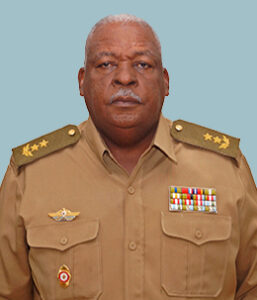
General de división
Ricardo Rigel Tejeda (59)
Jefe del Ejército Oriental
El general Rigel Tejeda nació cerca de “La Gran Piedra”, en las montañas de la Sierra Maestra, cerca de Santiago de Cuba. En 1983 ingresó en la academia militar “José Maceo”. Al graduarse, se la asignó a un pelotón de infantería y más tarde fue designado oficial de un batallón de tanques. En 1987, Rigel Tejeda fue desplegado en las campañas de Angola. De regreso en Cuba, fue enviado a la academia de oficiales “Máximo Gómez”. En noviembre de 2016, Rigel Tejeda fue ascendido a general de brigada y en 2021 a general de división y jefe del Ejército Oriental.
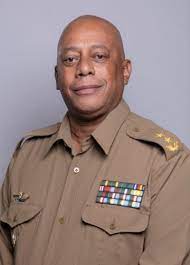
General de División José Gómez del Vallín (63)
Jefe de Contrainteligencia Militar (MINFAR).
Se graduó en la Escuela Militar Superior “Comandante Arides Estévez Sánchez”, una academia de élite enfocada en el espionaje (ahora con el nombre Universidad Militar de Ciencias Jurídicas), como oficial de contrainteligencia. En 2017, Gómez del Vallín reemplazó al vicealmirante Julio César Gandarilla en la Dirección de Contrainteligencia Militar del MINFAR. Dirige la represión de activistas disidentes en Cuba.
PERSONAL SIGNIFICATIVO
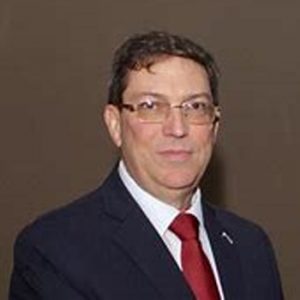
Bruno Rodríguez Parrilla (65)
Ministro de Relaciones Exteriores (MINREX)
Superviviente de varias purgas políticas, es abogado y sirvió en Angola en misiones internacionalistas como oficial subalterno de las FAR. En la Universidad de La Habana fue uno de los líderes de la FEU (Federación Estudiantil Universitaria) y exdirector de la revista Juventud Rebelde. De 1995 a 2003 fue embajador de Cuba ante las Naciones Unidas. Rodríguez Parrilla fue nombrado ministro de Relaciones Exteriores en 2009. Su salud es motivo de preocupación.
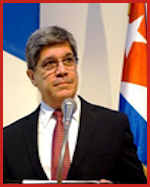
Carlos Fernández de Cossío (64)
Viceministro de Relaciones Exteriores (MINREX)
En 1984 empezó su carrera diplomática. en el MINREX. De 1994 a 1999, Cossío fue director del Departamento de América del Norte. En 1994 fue nombrado embajador en Canadá. Entre el 2005 y 2013, Fernández de Cossío desempeñó diversas misiones diplomáticas y administrativas. De 2013 a 2017 fue embajador de Cuba en Sudáfrica. Fernández de Cossío es uno de los diplomáticos cubanos más influyentes en el análisis y la implementación de la política de Cuba hacia Estados Unidos.

Walter Baluja García (56)
Ministro de Educación Superior
Exrector de la Universidad de Ciencias Informáticas (UCI), fue promovido a viceministro de Educación Superior en julio de 2021 y a ministro en abril del 2023. Es una figura principal en las estrategias cibernéticas para controlar el flujo de información en Internet.
Ha participado en la implementación de las “ciberclarias”, un ejército de jóvenes especialistas en cibernética que se infiltran en las redes sociales a través de perfiles falsos, promueven mensajes de apoyo al régimen militar cubano, desacreditan a la oposición y a los activistas independientes y difunden propaganda comunista y desinformación. Diputado a la Asamblea Nacional del Poder Popular por Cienfuegos.
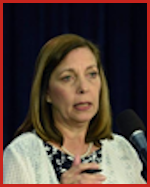
Josefina Vidal Ferreiro (63)
Viceministra de Relaciones Exteriores (MINREX)
Josefina Vidal Ferreiro nació en Santiago de Cuba. En 1984 se licenció en el Instituto Estatal de Relaciones Internacionales de Moscú. De 1991 a 1997 fue analista en la Embajada de Cuba en París, Francia. De 1999 a 2003 fue primera secretaria de la Sección de Intereses de Cuba en Washington D.C.
Vidal Ferreiro estuvo entre los diplomáticos cubanos de más alto nivel que organizaron la visita del presidente Obama a Cuba. De marzo de 2018 a septiembre de 2021, Vidal fue embajadora de Cuba en Canadá. Tiene un importante nivel de influencia en la política cubana hacia Estados Unidos.
LA LÍNEA DURA DEL PARTIDO COMUNISTA

Salvador Valdés Mesa (79)
Vicepresidente de Cuba
Ha ocupado diversos cargos en la CTC (Central de Trabajadores de Cuba) y en el Partido Comunista. Fue ministro de Trabajo entre 1995 y 1998 y secretario general del Sindicato de Trabajadores Agropecuarios. Es miembro influyente del régimen comunista. Es miembro del politburó.
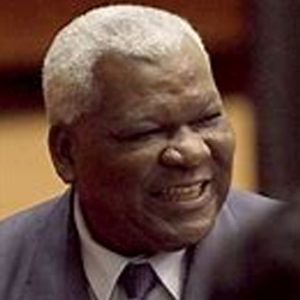
Esteban Lazo Hernández (80)
Presidente de la Asamblea Nacional del Poder Popular y del Consejo de Estado
Es uno de los pocos afrodescendientes de alto rango en el gobierno comunista. Miembro del círculo interno de Raúl Castro, Esteban Lazo es cercano al general Álvaro López Miera y a Alejandro Castro. Es una figura destacada de la nomenclatura cubana. Es miembro del politburó.

Gladys Bejerano Portela (76)
Contralora General de Cuba
Bejerano Portela es la contralora general de Cuba desde 2009. Es la auditora que supervisa los informes financieros, como balances y declaraciones de ingresos, de todos los organismos estatales. Sigue los pasos del coronel Alejandro Castro, Coordinador de Inteligencia del MINFAR y el MININT. Nunca notifica con antelación cuando van a hacer una auditoría. GAESA y las empresas militares están fuera del alcance de la Contraloría General.
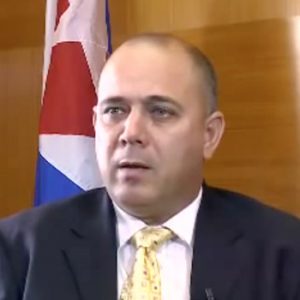
Roberto Tomás Morales Ojeda (56)
Secretario de Organización y Militancia del PCC
Fue nombrado en su actual cargo el 20 de abril de 2021. Se graduó en medicina. En 2006 fue designado primer secretario del Partido Comunista en Cienfuegos. En julio de 2010, Morales Ojeda fue nombrado ministro de Salud Pública. Sus vínculos con GAESA continúan siendo de vital importancia en conexión con los enormes ingresos del programa médico internacional. Miembro del politburó, es un marxista-leninista dogmático de línea dura.
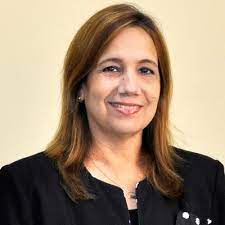
Ana María (Mary) Machado (60)
Vicepresidenta de la Asamblea Nacional
Mary Machado es una abogada que mostró disciplina y lealtad a sus responsabilidades judiciales. En el año 2000 fue nombrada jueza del Tribunal Provincial de Santa Clara. En 2009 fue seleccionada para el Tribunal Supremo de Cuba. En 2011 ingresó en el Comité Central del Partido Comunista. En 2012 fue nombrada vicepresidenta de la Asamblea Nacional de Cuba. Mary Machado tiene una maestría en Administración Pública.
| Army Corps General Álvaro López Miera (79) Minister of the FAR He is the son of a Marxist exiled in Santiago de Cuba after the Spanish Civil War. López Miera is a veteran of guerrilla struggles in Cuba and of war in Africa. Through the years, he developed a close bond with Raúl Castro and Vilma Espin’s family. López Miera is the top ranking General in the Armed Forces. The U.S government based on the Global Magnitsky Human Rights Act sanctioned General López Miera in connection with the brutal repression of the peaceful pro-democratic protest that began on July 116. Ideologically, López Miera is a Marxist-Leninist hard liner with a narrow cultural insight. |
GAESA | Division General Luis Alberto Rodríguez López Callejas (61) President of GAESA In a remarkable concentration of power, Luis Alberto Rodríguez López Callejas, is the President of GAESA, Division General (MINFAR), member of the Politburo and the National Assembly. (October 23rd, 2021). He is becoming the powerful authority of the military oligarchy. GAESA is a gigantic conglomerate of State and mixed enterprises that manages the legal and illegal financial deals of the Cuban Government (a highly secret operation), including a distribution partnership with the Colombian and Venezuelan drug cartels. He is the son of General Guillermo Rodríguez, and father of Lieutenant Colonel Raúl Guillermo Rodríguez Castro (Raúl Castro’s grandson and head of his bodyguards). Division General Rodríguez López Callejas is the Tzar of the Cuban Economy. On September 30th, 2020, he was sanctioned by the U.S. Department of the Treasury’s Office of Foreign Assets Control (OFAC)7. |
| Division General Lázaro Álvarez Casas (57) Minister of the Interior (MININT) Álvarez Casas joined the Armed Forces in his early 20s and worked in several military tasks including Counterintelligence Chief. He served in Angola and graduated from the “Máximo Gomez” Academy. He is the nephew of the late General Julio Casas, founder of GAESA. General Álvarez Casas was sanctioned by the U.S. Department of the Treasury’s Office of Foreign Assets based on the Global Magnitsky Human Rights Act on January 15, 20218. He is among the most intolerant and violent members of the military dictatorship. |
DOMINANT MILITARY OLIGARCHY
|
|
Army Corps General Ramón Espinosa (82) First MINFAR Deputy Minister, Chief of the Eastern Strategic Regional Authority (SRA) Espinosa joined the Rebel Army in the Escambray Mountains. Veteran of the African campaigns, he graduated from the Soviet Voroshilov Academy. Espinosa is close to General López Miera and Quintas Solá. For 27 years (1982-2009), he was head of the Territorial Eastern Army and was appointed First Deputy Minister in 2021. |
|
|
Army Corps General Joaquín Quintas Solá (83) Second MINFAR Deputy Minister; Chief of the Central Strategic Regional Authority (SRA) Born in Santiago de Cuba, he joined Frank Pais9 in clandestine operations. In 1958, General Quintas Solá became part of Raúl Castro’s guerilla in Sierra Cristal. Veteran of the African campaigns, he traveled frequently to Venezuela, where he worked closely with general Leonardo Andollo. Quintas Solá graduated from the Soviet Voroshilov Academy and has close links with the Generals López Miera and Espinosa. |
|
|
Division General Roberto Legrá Sotolongo (66) Armed Forces Chief of General Staff – MINFAR General Legrá Sotolongo is a veteran of Africa’s campaigns. In Angola, he was Chief of the Lubango Tactical Group. He had held several relevant commands including Chief of Staff of the Western Army. Legrá Sotolongo was sanctioned by the U.S. government based on the Global Magnitsky Human Rights Act on August 19, 2021.10 Legrá Sotolongo is an influential member of the inner circle of power. |
|
|
Colonel Alejandro Castro Espín (57) Intelligence Coordinator of the Armed Forces Son of Raúl Castro and Vilma Espín Alejandro Castro is a prominent figure in Cuba’s power structure. He has close personal relations with the Kremlin, including Vladimir Putin. His name surfaced as the lead perpetrator of the sonic attacks to the U.S and Canadian diplomats in Havana. He is keeping a low profile in the ongoing political and economic debacle. Lacking charisma, he remains very active as intelligence coordinator of MINFAR and MININT. |
|
|
Manuel Marrero Cruz (56) Prime Minister. Head of the Cuban Government Manuel Marrero is an architectural engineer. He began working in 1990 with General Pérez Róspide and Rodríguez López Callejas, in the newly created Gaviota. From 2004 to 2019, Marrero was Minister of Tourism. On December 21, 2019, Marrero was appointed Prime Minister of the Cuban government. He remains close to Luis Alberto Rodríguez López Callejas |
|
|
Miguel Díaz Canel (60) President of the Cuban Government A civil engineer, he was minister of Higher Education from 2009 to 2012. Díaz Canel lacks a solid foothold in the military oligarchy’s structure. He is a dull communicator, facing mounting dissident protests and economic collapse. Diaz Canel is the President of a dysfunctional communist system, seeking legitimacy to the failed Marxist Constitution and government. He holds a powerless presidency. |
|
|
Brigadier General José Amado Guerra (67) Executive Secretary, Council of Ministers In 1978, he served in Africa (Ethiopia). Back in Cuba, he was assigned to the Staff of the Chief in the Eastern Army. Guerra worked for several years under the Command of General Julio Casas while he was building GAESA, and later was transferred to the inner circle of General of the Army Raúl Castro. Today, General Amado Guerra is among the best-connected officers of the Armed Forces and GAESA. |
MILITARY COMMANDERS MINFAR –MININT
|
|
Division General Raúl Acosta Gregorich (70) Western Territorial Army Chief General Acosta joined the FAR in 1967. In 1970, he graduated from the Soviet Voroshilov Military Academy. In 1977, Acosta was deployed to Angola as Chief of Staff in an Artillery Regiment. During his military career, he served as Chief of Staff in the Western Army. The armorer Division “Rescate de Sanguily” is under his command. In 2016, Venezuelan opposition voices denounced the presence in Fuerte Tiuna of 60 military operatives commanded by Acosta Gregorich.11 |
|
|
Division General Andrés González Brito (67) Chief Central Territorial Army General González Brito was 6 years old when the Rebel Army entered Havana. In 1969, he joined the Academy “Camilo Cienfuegos” and graduated in 1974 as a junior officer. González Brito led various military tasks, including Chief of the Tank Regiment UM 2376 and Chief of the Military Region “Ciudad de la Habana”. He is a dogmatic hard liner and was sanctioned by the U.S. government under Executive Order 13818 which builds upon and implements the Global Magnitsky Human Rights Accountability Act for human right violations on August 19, 202112. |
|
|
Brigadier General Oscar Callejas Valcárcel National Revolutionary Police Chief (PNR/MININT) For years, General Callejas was the First Deputy Chief of the Directorate of the PNR. He assumed command at the beginning of 2021 after the dismissal of Brigadier General Jesús Becerra Morciego. On July 30th, 2021, he was sanctioned by the U.S. government for human rights violations under Executive Order 13818 which builds upon and implements the Global Magnitsky Human Rights Accountability Act.13 |
|
|
Division General José Gómez del Vallín Military Counterintelligence Chief (MINFAR) Graduated from the Superior Military School “Comandante Arides Estévez Sánchez”, an elite spycraft academy (now Military University of Legal Sciences) as a counterintelligence officer. He replaced Vice Admiral Julio César Gandarilla in the Directorate of Military Counterintelligence of FAR’s in 2017. He is leading the surveillance and repression of the dissident activists. |
|
|
Brigadier General Jesús M. Burón Tabit Vice Minister (MININT) Brigadier General Jesús M. Burón Tabit is another member of the military who was transferred from MINFAR to MININT, in the field of counterintelligence. In 2015, he chaired the Ministerial Examination Commission of the “Arides Estevez” Higher Military School. In 2020, he received the Olo Pantoja Medal Award granted by MININT. Buron Tabit is an experienced intelligence officer. |
|
|
Brigadier General Norge F. Enrich Pons Counterintelligence Chief (MININT) Graduated from the Superior Military School “Comandante Arides Estévez Sánchez”, an elite spy craft academy (now Military University of Legal Sciences). The Counterintelligence Directorate of MININT is in charge of internal security, including surveillance and repression against the growing dissidence movement, and counterespionage of the diplomatic service. |
|
|
Lieutenant Colonel Francisco Estrada Portales Criminal Investigation Section Chief (MININT) He is a leading officer in the repression against dissidents. He directed the MININT Investigation of the acoustic attacks to the U.S. and Canadian embassies. Estrada Portales is among the most feared interrogators in the dreaded “Villa Marista”’ State Security detention center. He led the MININT reprisal against Movimiento San Isidro’s dissidents and was directly involved in the brutal repression of the July 11, 2021, freedom march in Cuba. |
MINISTRY OF THE INTERIOR (MININT)
The Ministry of the Interior (MININT) was founded on June 6, 1961. At present time its numerical strength is 20,000 operatives and 6,500 border guards [estimated].
They were trained by the East German Stassi and the Soviet KGB. Castro was swift in constructing a totalitarian police state. The MININT officers were thoroughly trained in internal surveillance, recruitment of informer’s for infiltration as spies in resistance groups, and painful interrogation techniques. Some units were schooled as elite fighting forces. The KGB and Stassi taught MININT’s Dirección General de Inteligencia (DGI), presently known as Dirección de Inteligencia (DI), the full range of espionage tradecraft. The DGI became good spying agents, ranking with the Israelis among the best small nations’ intelligence in the world.
The MININT controls the intelligence and counterintelligence services, the National Revolutionary Police (PNR), the Special National Brigade (Boinas Negras), the Coast Guard, the Prison Services and the Committee for the Defense of Revolution (CDR).
The MININT objectives are to watch, incarcerate, torture and often murder the political opposition activists and leaders. MININT’s most successful operation was the recruiting of Ana Belen Montes, a senior Pentagon analyst with top secret clearance. She spied for over fifteen years providing detailed information on vital U.S. classified military data to communist Cuba. She was arrested on September, 2001 and sentenced to 25 years in prison.
During the 62 years of dictatorship, the MININT has led a brutal repression by applying violence, arrests, beatings, and extrajudicial executions. The MININT Special Forces “Boinas Negras” were sanctioned by the U.S Government for their ferocious violations of Cuban dissidents’ human rights during and after the July 11’s peaceful marches.14
China is heavily providing Cyber Technology upgrading and Cuba’s personnel training for internet misinformation, vigilance and control over social media.
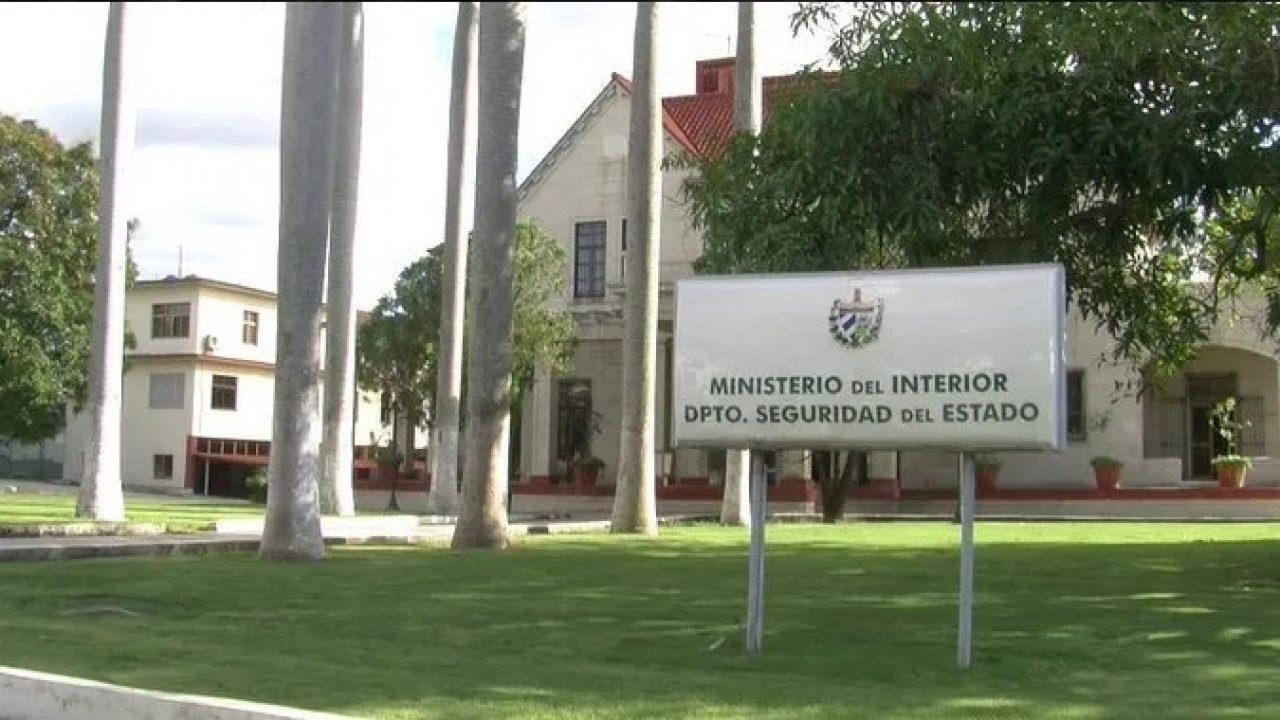
The fearsome headquarters
of State Security in Havana (MININT),
known as Villa Marista, where political opponents are
detained, interrogated and tortured.
CUBAN GENERALS IN VENEZUELA
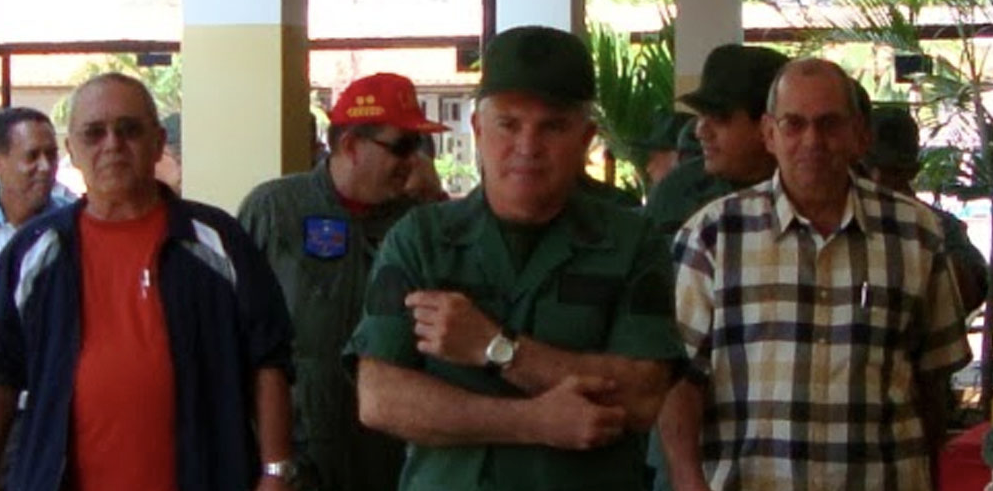
General Andollo (red t-shirt) with Cuban officers in the Maiquetia airport (Venezuela)
|
|
General Division Leonardo Andollo Valdés (78) Coordinator of the Group of the Revolutionary Armed Forces of Cuba in Venezuela (GRUCE) Leonardo Andollo is a veteran of the African’s campaigns, where he became a military logistic expert. Andollo established a close relationship with Venezuelan military “Cartel de los Soles”. He frequently travels to Caracas where he coordinates the transshipments of drugs from Colombia to the U.S. via secured areas in Central America and to the European Union countries mostly via Northern Africa. Andollo is an influential member of Cuba’s inner circle of power. He is close to the GAESA financial operations. |
|
|
División General Ermio Hernández Rodríguez (78) Chief of Operation of the Group of the Revolutionary Armed Forces of Cuba in Venezuela (GRUCE) Veteran of Ethiopia and Angola. He graduated from the Soviet military Academy as a Tank Tactical Expert. He fought in the Cuito-Cuanavale battle against the South African Army. He operates in Caracas from Fort Tiuna, commanding the Cuban elite forces deployed in Venezuela. |
THE ARMED FORCES CAPABILITIES15
There are 38,000 active military personnel and 30,000 reserved troops integrated into 14 infantry brigades.
Due to the economic collapse the military capability has been reduced by a massive budget cut. The budget priority is firmly for internal vigilance and repression.
Russia gives modest military support mostly for aging military equipment.
STRATEGIC REGIONAL AUTHORITIES.
There are three powerful Strategic Regional Authorities (SRA), established by the National Defense Council.
Western. Army Corp General Leopoldo Cintas Frías (retiring)
Central. Army Corp. general Joaquín Quintas Solá
Eastern. Army Corp General Ramón Espinosa
THE THREE TERRITORIAL ARMIES
Western Army. Division General Raúl Acosta Gregorich (70)
Central Army. Division General Andrés González Brito (67)
Eastern Army. Vacant
ARMY FORCES BY ROLE
ARMORED DIVISION:
The “Rescate de Sanguily” tank division is integrated in three brigades of forty-two tanks each. Total 126 battle tanks.
MIXED MECH 2 Brigades | AIRBORNE 1 Brigades | LIGHT INFANTRY 2 Brigades | SPECIAL FORCES 3 Regiments |
ARMORED VEHICLES INVENTORY:
Main Battle tanks: 900 E (T34-T54-T55-T62)
Armored Personnel Carrier: 500E
Assault Batteries.: 60E (Caliber 100 mm)
ARTILLERY INVENTORY:
Towed: 500E (Calibers: 122mm | 130mm | 152mm)
Multiple Rocket Launchers: 175E (Calibers: 122 mm | 140mm)
Self-Propelled: 40E (Calibers: 100mm | 120mm)
Mortars: 1000E (Calibers: 82mm | 120mm)
Much of the aviation fleet is reported to be in storage. The Navy has a minimum capability with 6 OSA II Fast Patrol Boats with missile launchers, 2 “Rio Damuji” vessels with missiles and a small helicopter landing platform. The Navy active personnel is 3000E officers and sailors.
FREE ACCESS TO INTERNET IS AN STRATEGIC PRIORITY
China has a major role in providing Cuba with modern cyber technological expertise to control people’s access to the internet. Since the massive protests of July 11, 2021, China’s intervention has been a major factor in the internet restrictions and blackouts. China’s ties with Cuba in the communications technology sector and especially in the so-called “digital authoritarianism” have been revealed by the international press.16.
On July 21, 2021, Senator Bob Menendez published a report on China’s digital authoritarianism. “As this report lays out, China is seeking to exploit new and emerging technologies to cultivate digital authoritarianism along multiple paths and is utilizing its entire policy toolkit, including political, economic, diplomatic, and coercive means, to shape the digital domain in its desired image.”17
On the issue of China’s technological expertise in internet censorship, shamelessly displayed in Hong Kong’s internet repression, Senator Marcos Rubio was direct and to the point. He stated in one twitter post, “They use a system made, sold, and installed by China to control and block access to the internet in Cuba”.18
Growing internet development offers extraordinary opportunities to communicate ideas without state’s control. “This has made the digital world into a form of new frontier and outlet for dissenting views, especially valuable to activists living under some of the world’s most authoritarian regimes”19.
It seems that the July 11 massive mobilization of protesters was galvanized by social media. The Cuban military response is to stifle and control the internet networks.

Image of the massive protests
where thousands of Cubans marched throughout the
Island during July 2021, demanding freedom. (El País)
GAESA (GRUPO DE ADMINISTRACIÓN EMPRESARIAL S.A.)
GAESA is a gigantic military-controlled umbrella enterprise that began operations under the direction of General Julio Casas Regueiro (deceased), a powerful member of Raúl Castro’s inner circle from Sierra Cristal’s guerrilla. General Casas was Luis Alberto Rodríguez López Callejas’ financial management mentor. He is in control of every money-making operation in Cuba including GAVIOTA and CIMEX enterprises.
GAVIOTA: It operates most of the tourist hotel chains with over 35 K rooms throughout the island, in partnership with several international corporations including Spain’s Melia, Sheraton’s Starwood and the Swiss-based Kaminski.
CIMEX: It manages over 2,800 retail outlets, comprising the Panamericana Stores, fast food restaurants and gas stations, commercial enterprises, jewelry stores, construction and real states companies, clothing, appliances and tours operations.
GAESA controls the Cuban (legal and illegal) economy and employs thousands of retired military personnel.
During 2020, GAESA took over all the hotels, stores and eateries in colonial old Havana, previously operated by Habaguanex, an entity administered by the City historian’s office.
All remittances, international medical revenues and illegal drugs related financial operations are tightly controlled by GAESA. When combined, they are Cuba’s largest money-making operation.
This huge military enterprise does not disclose financial records. GAESA revenues are top-secret. Luis Alberto Rodríguez López Callejas, Álvaro López Miera, Raúl Castro, and a few selected individuals, have access to GAESA’s multi billion financial records. 
GAESA Headquarters in Havana
GAESA – ECONOMY’S LEADERSHIP
|
|
División General Luis Pérez Róspide (78) Pérez Róspide is a veteran of Africa’s campaigns. He was trained and tutored by General Julio Casas Regueiro. He graduated in Military Mechanical Engineering, specializing in Armored Technique from the Soviet Military Academy. In 1988, he was assigned as Director of the Union of Military Industry. Pérez Róspide was a key player in the concept of MINFAR’s “Perfeccionamiento Empresarial”. At the beginning of the nineties, he was appointed as president of Gaviota, the most important and profitable of the GAESA military’s enterprises. Pérez Róspide is a trusted member of Rodríguez Lopez Calleja’s inner circle of power. |
|
|
Colonel Héctor Oroza Basutín President of Cuban Export-Import Corporation (CIMEX) Oroza Basutín directs 73 commercial subsidiaries, 21 corporations, and controls a huge financial operation, including over 2800 retail outlets and 73 enterprises located in foreign countries. All CIMEX business transactions are in U.S. dollars or European euros. In 2012, CIMEX became a subsidiary of GAESA. Colonel Basutín belongs to Cuba’s financial elite. |
|
|
Rodrigo Malmierca (65) Minister of Foreign Trade and Investment He is the son of former Cuban Foreign Minister Isidoro Malmierca Peoli, one of the founders of State Security. Rodrigo graduated in Economics from the University of Havana in 1980. He worked from 1982 to 1992 in the Department of International Economic Institution. From 2002 to 2005, Malmierca served as Ambassador to Belgium, and the European Union. In 2009, General Raúl Castro appointed Malmierca as Foreign Trade and Investment Minister. He is a Marxist-Leninist hard liner. |
|
|
Juan Carlos García Granda (57) An efficient and low profile bureaucrat from the ranks of GAESA. Garcia Granda was appointed Minister of Tourism in December, 2019. During 2020 and 2021, García Granda participated in numerous international forums in an effort to promote Cuba’s tourism impacted by the Covid 19 pandemic and travel restrictions. He works closely with Prime Minister Manuel Marrero. The impact of Covid 19 was catastrophic for the tourism industry. Visitors in the first semester of 2021, felled from 986,673 to 141,316 (86%) compared to the same period the prior year.20 |
|
|
Dr. José Ángel Portal Miranda (54) Public Health Minister Dr. José Ángel Portal is a Specialist in Comprehensive General Medicine. He was named as Public Health Minister in December, 2018. He has been a member of the Communist Party of Cuba since 1995. He holds the medal “Distinguished Service” of the FAR. He coordinates with GAESA the multi-million dollar earnings assigned to the program of Cuban medical doctors and nurses, in several countries throughout the world. A program which has been denounced on international forums as a modern form of slavery due to the fact that the Cuban government collects 80% of the medical personnel’s salaries. |
|
|
Alejandro Gil Fernández (57) Economy Minister and Deputy Prime Minister Alejandro Gil Fernández was born in 1964. He was appointed on July 21, 2018 as Economy and Planning Minister. On December 21, 2019, he was designated Deputy Prime Minister. He studied Engineering in Transportation Operations at the Technological University, and he is a Master in Finance at University of Havana. He was Director of Grupo Caudal, a financial entity dedicated to consulting, and advisory services. Gil is enduring a most difficult agenda. Before the COVID 19 pandemic, Cuba was dealing with a national infrastructure catastrophe and the worst economic crisis since the collapse of the Soviet Union. |
THE COMMUNIST PARTY HARD-LINNERS
|
|
Esteban Lazo Hernández (78) President of the National Assembly of the People’s Power and State Council He is among the few ranking African descendant individuals in the communist government. A member of Raúl Castro’s inner circle, Esteban Lazo is close to General Álvaro López Miera, Luis Alberto Rodríguez López Callejas and Alejandro Castro. He is a prominent figure in Cuba’s “nomenklatura”.21 |
|
|
Salvador Valdés Mesa (76) Vice President of Cuba He has occupied several positions in the CTC (Central of Workers of Cuba) and in the Communist Party. He was Minister of Labor between 1995 to 1998. He was Secretary General of the National Trade Union of Agricultural Workers (Sindicato de Trabajadores Agropecuarios). He is an influential member of the regime. |
|
|
Roberto Tomás Morales Ojeda (54) Secretary of Organization and Militancy of the Communist Party. Appointed to his present position on April 20, 2021.Graduated from Medical School. In 2006, he was designated First Secretary of the Communist Party in Cienfuegos. In July 2010, Morales Ojeda became Minister of Public Health. His ties with GAESA continue to be essential in connection with the huge revenues of the International Medical program. He is a dogmatic Marxist-Leninist hardliner. |
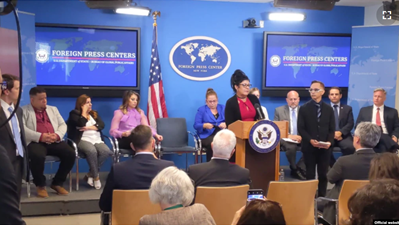
Cuban doctors denounce the conditions of modern slavery that they suffer when participating in Cuban government international programs in which they are paid 20% of their salaries, and Cuban regime keeps 80%. This program is among the main sources of revenue of the Cuban military oligarchy. (Radio y Television Marti)
|
|
Gladys Bejerano Portela (74) Comptroller General of Cuba Bejerano Portela is the Comptroller General of Cuba since 2009. She is the auditor of accounting and oversees the financial reports, such as balance sheets and income statements, of all the State organisms with the exception of Luis Alberto Rodriguez’s GAESA that has never made a public financial statement. She is a tough controller who follows the lead of Colonel Alejandro Castro, Coordinator of intelligence of the MINFAR and MININT. They never notify in advance when they will do an audit. GAESA and the military enterprises are out of the reach of the Comptroller General. |
|
|
Inés María Chapman Waugh (53) Deputy Prime Minister Graduated in Hydraulic Engineering. She was president of the National Institute of Hydraulic Resources. On 19 December 2019 was promoted to the position of Deputy Prime Minister of the Republic of Cuba. She worked in Holguin as Deputy Director of the Empresa de Aprovechamiento Hidráulico. Maria Chapman is gaining influence within the bureaucracy’s nomenklatura. |
|
|
Rogelio Polanco Fuentes Chief of the Ideological Department of the Communist Party Rogelio Polanco studied International Political Relations at ISRI. He was a member of the National Bureau of Communist Youth (UJC). He was Director of “Juventud Rebelde” Newspaper (1997-2009) and Ambassador to Venezuela from 2009-2019. While in Venezuela, he was closely linked to General Leonardo Andollo and Ermio Hernández. He was awarded the “Francisco de Miranda” Order. As Chief of the Ideological Department of the Communist Party, he is a leading dogmatic voice in social media. He is fully committed to the Marxist-Leninist hard line. |
SIGNIFICANT PERSONNEL
|
|
Bruno Rodríguez Parrilla (63) Foreign Affairs Minister A survivor of several political purges, he is an attorney and served in Angola on the internationalist missions as a junior officer in the FAR. At the University of Havana, he was among the leaders of the F.E.U (Federación Estudiantil Universitaria) and he was the director of Juventud Rebelde Newspaper. From 1995-2003, he was the Cuban Ambassador to the United Nations. Rodriguez Parrilla was appointed Minister of Foreign Affairs in 2009. His health is an issue of concern. |
|
|
Josefina Vidal Ferreiro (60) Vice Minister of Foreign Affairs. (MINREX) Josefina Vidal Ferreiro was born in Santiago de Cuba. She graduated from the Moscow State Institute of International Relations in 1984 with a Bachelor degree. From 1991 to 1997, she was an analyst at the Cuban Embassy in Paris, France. From 1999 to 2003, she was First Secretary at the Cuban Interest Section in Washington D.C. Vidal Ferreiro was among the highest Cuban Diplomats arranging President Obama’s visit to Cuba. From March 2018 to September 2021 Vidal was Cuba’s Ambassador to Canada. She has a relevant level of influence in Cuban politics to the US. |
|
|
Carlos Fernánadez de Cossío (61) Director of the U.S. Department, Ministry of Foreign Affairs (MINREX) In 1984, he began working for the MINREX. From 1994-1999, Cossío was director of the North America Department. In 1994, he was appointed Ambassador in Canada. From 2005 to 2013, Fernández de Cossío was active in various diplomatic and administrative assignments. From 2013 to 2017, he was Cuba’s Ambassador to South Africa. Fernández de Cossío is among the most influential Cuban diplomats in analyzing and implementing Cuba’s policy toward the U.S. |
|
|
Colonel Homero Acosta Secretary of the Council of State Acosta was appointed in August 2009 to this position. He holds a Master’s degree in Public Law. He began his career in the Revolutionary Armed Forces Military Tribunals. Colonel Acosta arrived at his current position because of his closeness to Raúl Castro in the Secretariat of the Ministry of the Revolutionary Armed Forces as a judicial advisor. According to reports, Acosta is very organized and efficient. He took part in the negotiations to reestablish diplomatic relations with the United States. Acosta worked on the final draft of the 2019 communist Constitution. He is also close to Alejandro Castro. |
|
|
Walter Baluja García First Vice Minister of Superior Education Walter Baluja was Rector of the University of Informatics Sciences (UCI) before his was promoted to his current position on July 9, 2021. He is a leading voice in the cyber strategies to control the flow of internet information. He has been involved in the implementation of the “ciberclarias”, an army of young cyber specialists that infiltrate social media through false profiles, promote messages supporting the Cuban military regime, discredit opposition and independent activists, and disseminate communist propaganda and disinformation. |
CONCLUSIONS
General Luis Alberto Rodríguez López Callejas, has achieved a huge amount of power as MINFAR Division General, President of GAESA, member of the Politburo and the National Assembly. He is becoming a powerful authority of the Military Oligarchy.
The present socio-economic crisis is the worst Cuba has faced. The progressive collapse of Cuba national infrastructure has reached the level of a historical catastrophe.
The massive protests of July 11th, 2021, mark a turning point in Cuban’s reality. People are demanding freedom and change on the streets and the world has witnessed this massive claim for the first time.
Free access to the internet in Cuba must be an strategic priority for Cuban exile, because it constitutes a valuable tool for Cubans to receive information and communicate among themselves inside the island.
NEXT STEPS FOR THE CCSS
The Cuba Center for Strategic Studies will continue working on essential issues about Cuba’s present and future. The new studies we are right now conducting are focused on different fields of interest.
Political protest in the territory of the obscene: Cuba and Russia, two case studies.
The Role of the Judiciary System after Communism in Cuba.
Power of the Word: Keys to the Language of Domination in Cuba.
Secrecy, Repression and Disinformation: the Three Pillars of the Cuban Totalitarian System.
Cuba’s Economic Infrastructure Breakdown.
CONCLUSIONES
El proceso de sucesión en Cuba ha caído en un peligroso vacío debido a la muerte repentina del presidente del GAESA, Luis Alberto Rodríguez López-Calleja. La hermandad que los generales de la generación forjada en la Sierra Maestra durante la lucha contra Batista y las campañas de África no están presentes en las nuevas generaciones militares. El vínculo que hubiera unido el poder político con la hegemonía económica de los militares una vez muerto Raúl Castro, desapareció. Por primera vez en la historia del régimen comunista cubano, el vacío de poder, la crisis económica, el creciente descontento popular y las ambiciones personales han generado posibles conflictos entre los oficiales más jóvenes.
La economía cubana sobrevive a duras penas a través de las remesas, el narcotráfico, el lavado de dinero y las subvenciones médicas internacionales que no están restringidas por el embargo estadounidense. Se ha incrementado el acercamiento a Rusia, tanto militar como económico con planes de cooperación; y político al apoyar la invasión de Putin a Ucrania. La presencia militar de China en Cuba es un creciente desafío de Pekín a Washington,al establecer una peligrosa presencia militar a 90 millas del territorio continental de los Estados Unidos.
Mientras tanto, los acontecimientos futuros seguirán tomándonos por sorpresa, como las masivas marchas pacíficas de protesta del 11 de julio de 2021 de una generación joven criada en la desastroza incoherencia de la economía comunista y alejada del decrépito discurso de la oligarquía militar. Cada día de sus vidas, los airados jóvenes cubanos tienen que enfrentarse a las ruinas que deja la fracasada revolución de Fidel Castro. Sin fe en la doctrina marxista, estos valientes cubanos viven en las sombras de la desesperanza y de una rebelión volcánica. Ellos son los protagonistas de un inevitable cambio real en Cuba hacia la libertad política y económica.
Bibliografías:
- Mark Falcof “Cuba the Morning After” (Cuba, la mañana siguiente) (Washington D.C.: Gaceta AEI) 103
- Raúl Castro, cita en “Cuba en el Mes” (abril de 1995), 44
- Irving Horowitz “Cuban Communism” (Comunismo cubano), (Universidad de Cambridge 1987-2001) p. 403
1 oligarchy, government by the few, especially despotic power exercised by a small and privileged group for corrupt or selfish purposes. https://www.britannica.com/topic/oligarchy
2 Roig, Pedro. “Death of a Dream: History of Cuba, Elusive Quest for Freedom”, Institute for Cuban and Cuban American Studies, Miami. P.338
3 Ibidem.
4 Roig, Pedro. Op.Cit. P. 339.
5 Ibidem
6 Declaration of Secretary Antony J. Blinken, July 22nd, 2021, based on Executive Order 13818 on the implementation of Global Magnitsky Human Rights Act. https://www.state.gov/sanctioning-cuban-security-forces-in-response-to-violent-repression-of-protests/?utm_medium=email&utm_source=govdelivery
7 https://www.govinfo.gov/content/pkg/FR-2020-10-05/pdf/2020-21933.pdf
8 https://home.treasury.gov/news/press-releases/sm1237
9 Frank País was the national coordinator of Movimiento 26 de julio in Cuba. He was assassinated by Batista’s political police on July 30th, 1957.
10 https://www.state.gov/sanctioning-cuban-officials-in-response-to-violence-against-peaceful-protestors-2/
11 https://apuedge.com/in-age-of-terror-why-is-obama-rushing-to-open-daily-flights-with-cuba/
12 https://www.state.gov/sanctioning-cuban-officials-in-response-to-violence-against-peaceful-protestors-2/
13 https://www.state.gov/sanctioning-cuban-police-in-response-to-violent-repression-of-peaceful-protests/
14 https://www.state.gov/sanctioning-cuban-police-in-response-to-violent-repression-of-peaceful-protests/
15 The Military Balance 2020, The International Institute for Strategic Studies, P. 415-417.
16 https://www.newsweek.com/china-behind-cuba-protests-censored-beijing-linked-1608771
17 https://www.foreign.senate.gov/press/ranking/release/ranking-member-menendez-publishes-new-minority-report-the-new-big-brother_china-and-digital-authoritarianism-
18 Senator Marco Rubio’s Twitter: https://twitter.com/marcorubio/status/1414435986281467907
19 “Internet Censorship”, Students for Liberty’s article. https://studentsforliberty.org/north-america/blog/freedom-of-expression/internet-censorship/
20 The Miami Herald, September 22nd, 2021
21 Nomenklatura: a select list or class of people from which appointees for top-level government positions are drawn, especially from a Communist Party. https://www.dictionary.com/browse/nomenklatura
Download PDF version here
